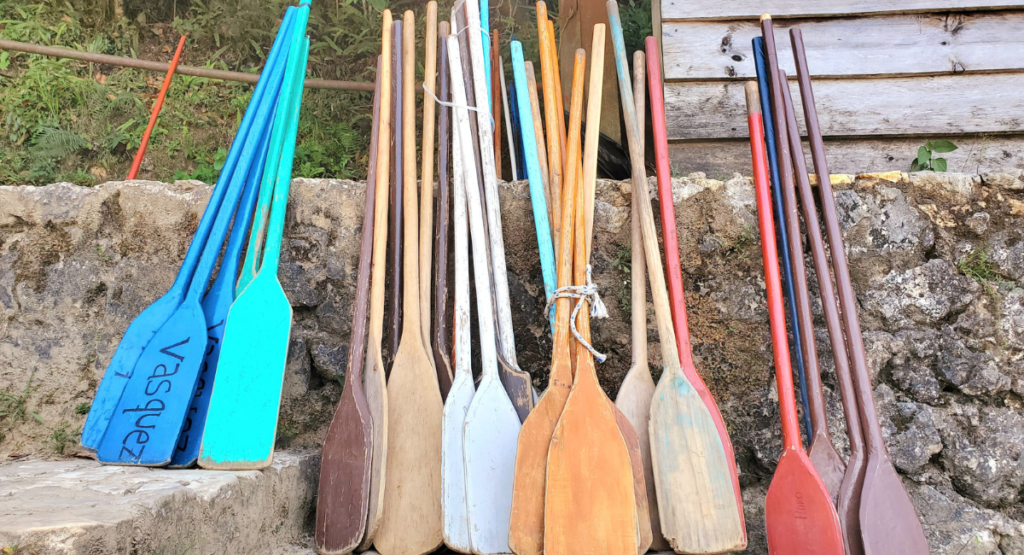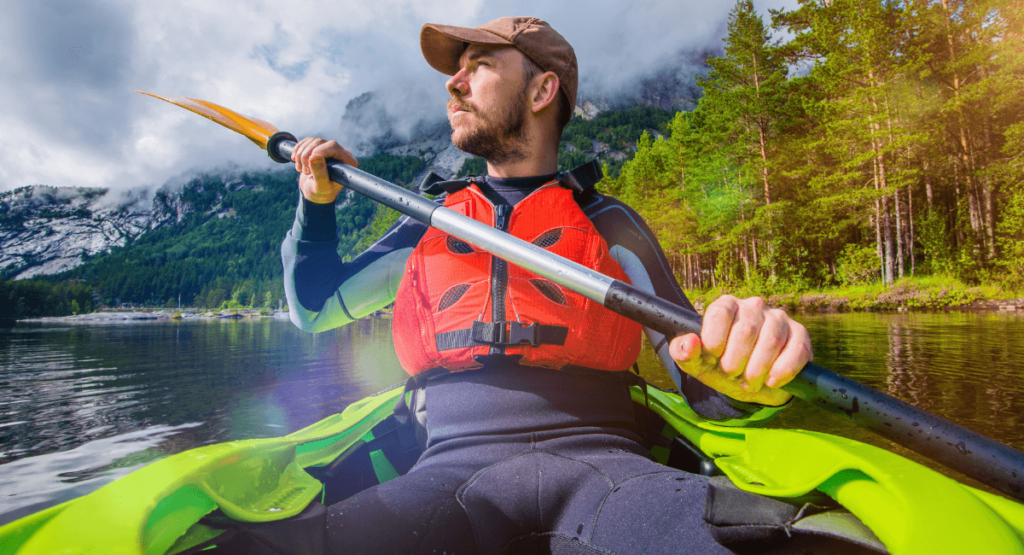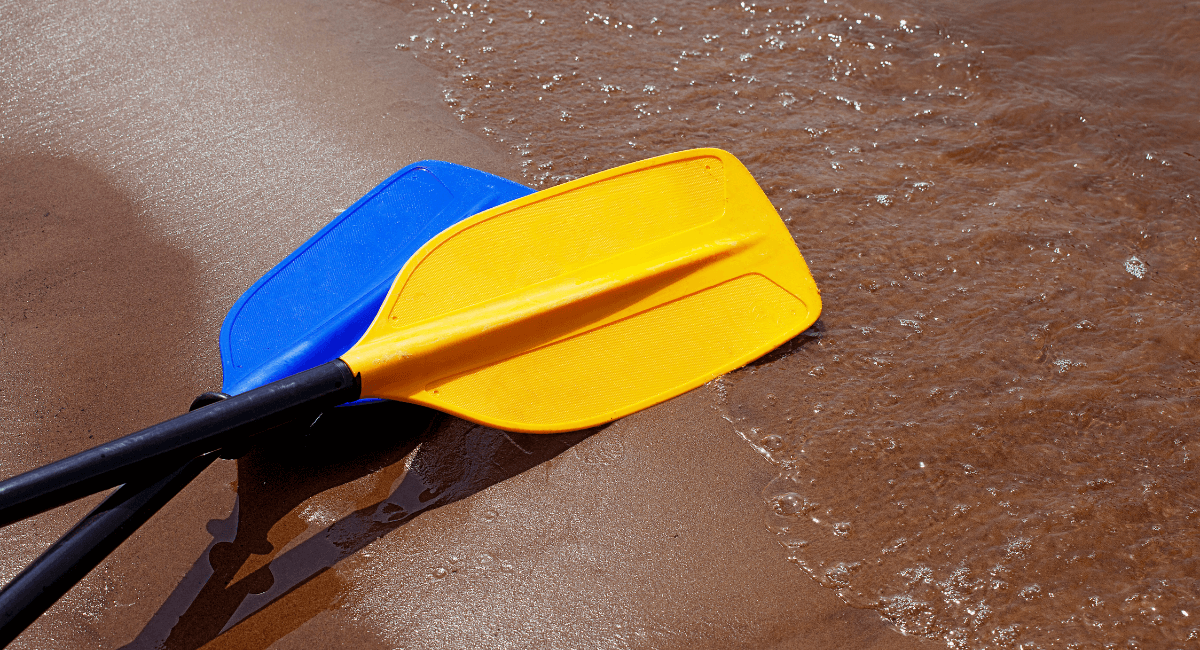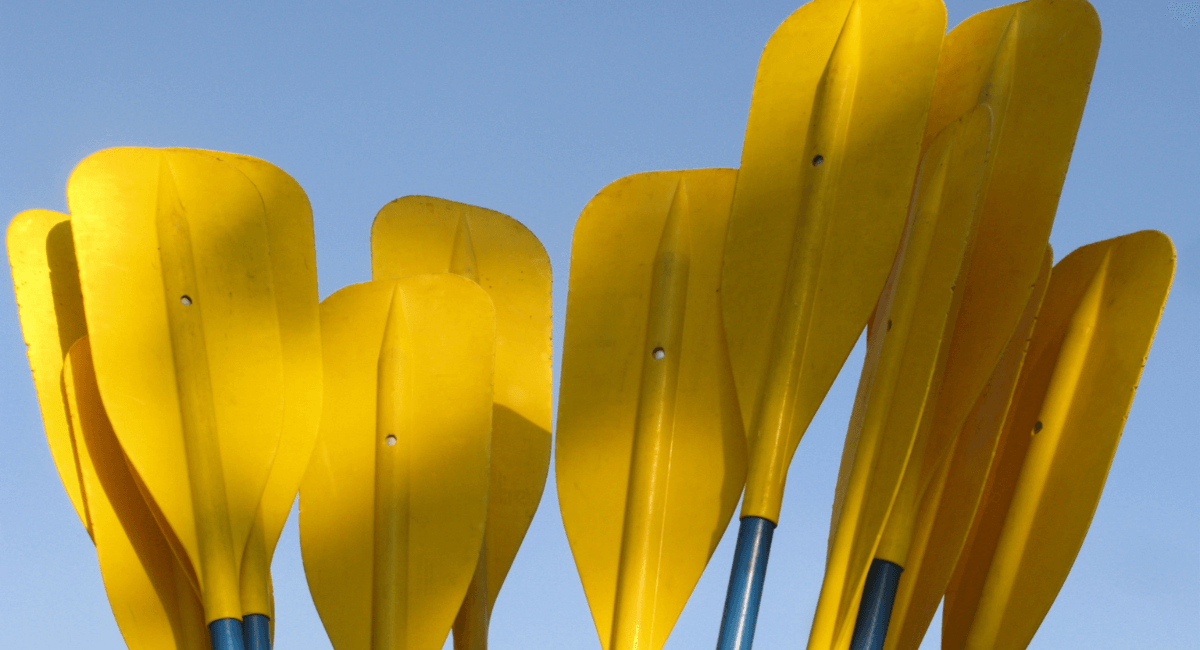Kayak paddles have offsets to improve efficiency and reduce strain on paddlers’ wrists while paddling. The offset design allows for a more natural paddling motion by keeping the blade at an angle that aligns with the paddler’s hand position.
This ergonomic design helps paddlers maintain better control and power during each stroke. The offset also reduces the likelihood of hitting the kayak’s sides while paddling, preventing unnecessary resistance in the water. Overall, the offset feature in kayak paddles enhances the paddling experience by increasing efficiency and comfort for the user.
With the right offset, paddlers can navigate the waters with ease and enjoy a more seamless paddling experience.
The Importance Of Kayak Paddle Offset
Kayak paddle offset, also known as feathering, plays a crucial role in ensuring a smoother and more efficient paddling experience. The offset refers to the angle at which the two paddle blades are set relative to each other. Understanding the importance of kayak paddle offset can help paddlers maximize their performance on the water.
Minimizing Wrist Strain
Kayak paddle offset is designed to minimize wrist strain during paddling, allowing for a more comfortable and sustainable grip on the paddle. When the paddle blades are offset, it reduces the need for the paddler to twist their wrist excessively with each stroke, helping to prevent overuse injuries and strain on the wrist joints.
Enhancing Paddling Efficiency
The offset of kayak paddles also enhances paddling efficiency by reducing wind resistance. By positioning the blades at an angle to each other, it reduces the amount of resistance encountered when slicing through the water. This allows paddlers to exert less energy during each stroke, ultimately leading to a smoother and more efficient paddling experience.
Understanding Kayak Paddle Offset

Definition Of Offset
Offset in kayak paddles refers to the angle difference between the left and right blades.
Types Of Offset
- Unfeathered: Both blades are in line with each other.
- Feathered: Blades are set at an angle to minimize wind resistance.
Factors Influencing Offset Design
When it comes to understanding why kayak paddles have offsets, several factors come into play that influence the design of the offset. These factors are crucial in determining the effectiveness and efficiency of the paddle for different paddling styles and kayak designs.
Paddling Style
The paddling style significantly impacts the ideal offset design of a kayak paddle. Stronger angles can benefit high-angle paddlers, providing better control and power. On the other hand, low-angle paddlers may prefer a subtle offset for smoother strokes.
Kayak Design
- Kayak design plays a vital role in determining the optimal offset for a paddle.
- Wider kayaks might require a larger offset to avoid hitting the sides during paddling.
- Narrower kayaks could benefit from a smaller offset for precise maneuvering in tight spaces.
Understanding these factors is essential in choosing the right paddle with the appropriate offset design to enhance your kayaking experience.
Choosing The Right Offset For You

Trial And Error
When it comes to finding the best paddle offset for you, trial and error can prove to be an effective method. By experimenting with different offsets, you can determine which one feels most comfortable and efficient for your paddling style.
Consulting With Experts
If you’re new to kayaking or unsure about the right offset for you, consulting with experts can provide valuable insight. Experienced paddlers and professional instructors can offer personalized guidance to help you select the most suitable paddle offset for your needs.
Impact Of Incorrectly Sized Offset
Incorrectly sized offset on kayak paddles can lead to inefficient paddling and discomfort for the user. Properly sized offsets help maintain optimal paddling angles, reducing strain and enhancing overall performance on the water. Choosing the right offset is essential for a smooth and enjoyable kayaking experience.
Decreased Performance
The size of the paddle offset plays a crucial role in the performance of a kayak paddle. When the offset size is incorrectly chosen, it can significantly impact the paddler’s ability to maneuver efficiently through the water.
A paddle with too little offset may cause the blade to dig too deeply into the water during the stroke, creating unnecessary resistance and reducing the overall paddling efficiency. On the other hand, a paddle with too much offset may result in a less powerful stroke, as it reduces the angle at which the blade enters the water.
Ultimately, an incorrectly sized offset can lead to decreased performance, making it more challenging for the paddler to maintain speed, navigate tight turns, and paddle against strong currents.
Increased Risk Of Injury
Another significant consequence of using an improperly sized offset is an increased risk of injury. Kayaking requires repetitive motions, and a paddle that doesn’t fit the paddler’s body and stroke style can put unnecessary strain on the paddler’s joints and muscles.
Paddlers using a paddle with too much offset may experience excessive wrist and shoulder strain due to an unnatural paddle position. This can lead to overuse injuries such as tendonitis and muscle strains.
Conversely, a paddle with too little offset can result in poor body alignment, causing discomfort in the wrists, arms, and shoulders. This misalignment can also lead to incorrect stroke mechanics, further increasing the risk of injury.
By ensuring the correct offset size, paddlers can minimize the risk of injury and enjoy a more comfortable and pain-free kayaking experience.
Recent Technological Advancements

In recent years, kayak paddle manufacturers have made significant strides in the development of their products. Through ongoing research and innovation, they have introduced several advancements that have greatly improved the performance and user experience of kayak paddles. In this section, we will explore two key technological advancements that have made kayak paddles even more efficient and customizable: adjustable offset systems and custom offset design options.
Adjustable Offset Systems
One notable advancement is the introduction of adjustable offset systems in kayak paddles. Traditionally, kayak paddles were designed with a fixed feather angle, also known as the offset. The feather angle refers to the angle at which the two blades of the paddle are offset from each other. However, with adjustable offset systems, paddlers now have the ability to modify the feather angle based on their personal preference and paddling style.
These adjustable offset systems typically consist of a ferrule, which is the joint connecting the two halves of the paddle shaft. By loosening the ferrule, paddlers can rotate the blades to achieve their desired feather angle. Some paddle models even feature a convenient scale or marking system, allowing for quick and accurate adjustments.
The introduction of adjustable offset systems has revolutionized the kayak paddle industry by enhancing the comfort and efficiency of paddlers. Moreover, it has addressed the common issue of wrist and shoulder strain that can occur with fixed feather angles. Paddlers can now find the optimal offset that suits their individual technique and minimizes unnecessary stress on their joints, ultimately improving their overall paddling experience.
Custom Offset Design Options
Another significant technological advancement in kayak paddles is the availability of custom offset design options. Manufacturers now offer a range of paddle models with various offset angles to cater to the specific needs of different paddlers and water conditions. This customization allows paddlers to fine-tune their paddles for maximum performance and efficiency.
With custom offset design options, paddlers can select the ideal feather angle to suit their style of paddling and environmental factors. For instance, paddlers who frequently encounter strong headwinds might prefer a higher offset angle to minimize wind resistance, while those who prioritize a smooth and fluid stroke might opt for a lower offset angle for reduced drag.
Furthermore, custom offset design options offer flexibility to adapt to varying water conditions. Paddlers can easily adjust their paddle’s offset angle based on wind direction, wave height, or other factors that affect paddling efficiency. This versatility is particularly valuable for paddlers who engage in different types of kayaking activities, such as touring, racing, or whitewater paddling.
Summary
In summary, recent technological advancements in kayak paddle design have introduced adjustable offset systems and custom offset design options. These innovations have significantly enhanced paddling comfort, efficiency, and versatility. With adjustable offset systems, paddlers can personalize their feather angle for optimal performance and reduced strain. Meanwhile, custom offset design options allow paddlers to fine-tune their paddle’s offset angle to suit their style and water conditions. Overall, these advancements have elevated the paddling experience, making kayak paddles even more adaptable and efficient.
Tips For Maintaining Your Kayak Paddle

As an avid kayaker, understanding the importance of maintaining your kayak paddle is essential for safe and enjoyable paddling experiences. Regular inspection and proper storage are critical for ensuring your paddle’s longevity and performance. In this section, we will explore some essential tips for maintaining your kayak paddle to keep it in optimal condition for your adventures.
Regular Inspection
Regular inspection of your kayak paddle is crucial to identify any signs of wear and tear. Check for cracks, dents, or any damage that could affect the paddle’s structural integrity. Additionally, ensure that the paddle blades are not bent or warped, as this can impact your paddling efficiency. Inspect the joints, ferrules, and shaft for any signs of corrosion or looseness. Keeping a keen eye on these aspects will help you address potential issues before they escalate and affect your paddling experience.
Proper Storage
Proper storage of your kayak paddle is essential for maintaining its condition. Store your paddle in a cool, dry place away from direct sunlight to prevent UV damage. Using a paddle bag or cover can provide an extra layer of protection from scratches and dings. When transporting your paddle, ensure it is secured properly to avoid any unnecessary jostling or impact. Avoid leaning the paddle against hard surfaces or storing it in cramped spaces that could lead to deformation or damage. By following these storage practices, you can help extend the lifespan of your kayak paddle.
Frequently Asked Questions For Why Do Kayak Paddles Have Offsets
Why Do Kayak Paddles Have Offsets?
Kayak paddles have offsets to help optimize efficiency and reduce strain on the paddler’s body. The offset blades create a slight angle between the two sides of the paddle, allowing for a more natural and efficient paddling motion. This design also helps to prevent the blade from hitting the boat’s side, ensuring a smoother and more comfortable kayaking experience.
Conclusion
By understanding the importance of offset in kayak paddles, you can enhance your paddling experience. The offset allows for a more efficient stroke, reducing strain and increasing maneuverability. It’s clear that selecting the right paddle with the appropriate offset can significantly improve your performance on the water.
Happy paddling!
